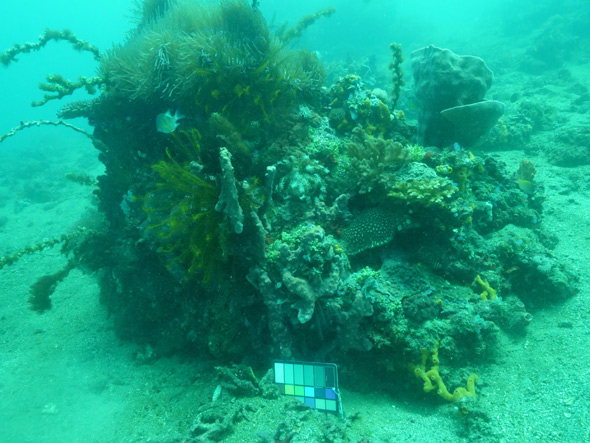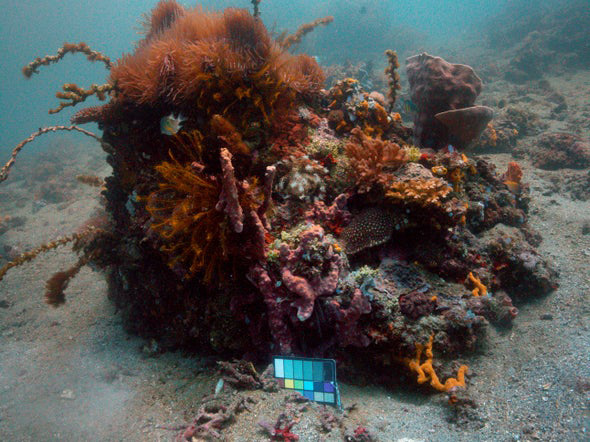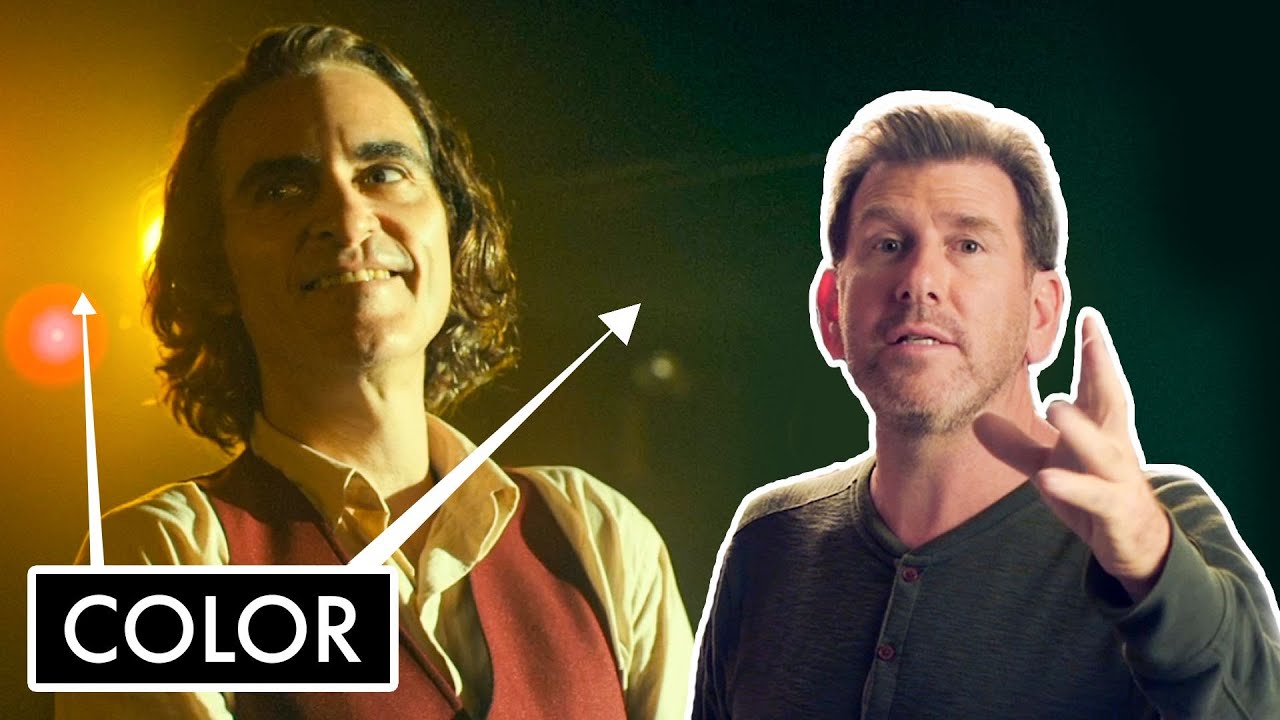[17:21 Fri,15.November 2019 by Thomas Richter] |
Without artificial light, even the most colorful fish and coral reefs on underwater photos usually appear only green/blue and dull colorless. The reason for this is that water scatters and absorbs some wavelengths of visible light, such as red and yellow, more than others, resulting in washed out colours. In addition, particles suspended in water falsify the image.  Coral Formation in the Original Sea-thru&s image analysis takes into account the physics of light absorption and scattering in the atmosphere compared to that in the ocean, where the particles with which the light interacts on the path to the eye (or image sensor) are much larger. Then the program removes the typical image distortion of underwater images pixel by pixel and restores lost colors. The algorithm differs from applications such as Photoshop, which allow users to artificially enhance underwater images by uniformly inflating red or yellow, by a more intelligent technique, which, by taking into account the distance the light has to travel through the water, can more reliably restore the individual color fractions absorbed and thus reproduce the "real" colors.  Coral Formation after Sea-thru Processing The algorithm, however, needs information about the distance of the different objects in the image to work in order to correctly calculate the color-changing effect of the water. However, the program can use multiple photos of the same object from different angles to successfully estimate the distance for further processing. Many scientific UW image data sets also contain distance data already determined by photogrammetry. It is probably only a matter of time until the "Sea-Thu" algorithm is also accessible for consumers and integrated into conventional image processing programs, it will also be further improved by deep learning. And hopefully it will soon be adapted and optimized for underwater videos, which would have the advantage that often enough images would be available for automatic distance estimation. We worked with consumer cameras like the Sony A7R Mk III and Nikon D810 - the colorchart in the photo is by the way only for subsequent reference and not necessary for the work of the algorithm. The algorithm works even better if it has data on the dominant optical properties of the water, which has already been tested using deutsche Version dieser Seite: Sea-thru: Fade Unterwasseraufnahmen bekommen echte Farben durch neuen Algorithmus |





